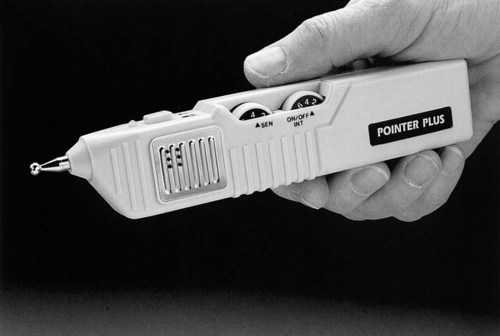I The mechanisms of acupuncture analgesia have been reviewed in the medical literature* II Modern theories attribute the effects of EAA to: A Inhibition of ascending (sensory) pain signals at the peripheral, spinal (“pain inhibition gates”), and central levels B Activation of descending brain-based pain inhibition mechanism, especially the midbrain and hypothalamus III Sensory nervous system components involved in pain sensation include Aδ and C-fibers A Acupuncture points are cutaneous areas with high concentrations of nerves (particularly Aδ fibers), mast cells, capillaries, venules, and lower electrical resistance than surrounding areas B Acupuncture stimuli are transmitted to the spinal cord by peripheral nerves C Aδ fibers are 10 times thicker, transmit impulses 10 times faster, have a lower threshold, and are associated with milder pain sensation than C-fibers D The “gate” theory suggests that Aδ fibers carry nonpainful sensations rapidly to the spinal cord where inhibitory neurons are stimulated and prevent slower pain impulses from reaching higher pain centers of conscious perception IV Neurotransmitters involved in acupuncture therapy and pain inhibition include: V Other neurotransmitters that potentiate acupuncture analgesia include: VI Frequency of stimulation affects fibers and neurotransmitters involved in pain perception response A Less than 5 Hz: Aδ fibers and enkephalin B More than100 Hz: C-fibers and dynorphin C More than 200 Hz: analgesia via serotonin and norepinephrine VII Duration of stimulation may change the mechanism of analgesia from opiate to nonopiate VIII Intensity of stimulation (voltage) traditionally is increased until muscle fasciculation is seen at 1 to 5 Hz. This produces the following conditions: IX High-frequency/low-intensity stimulation results in local segmental analgesia, which is irreversible by naloxone A Human acupuncture needles: 29- to 34-gauge B Veterinary acupuncture needles: 26- to 34-gauge for large animals; 28- to 36-gauge for small animals C The needles are inserted at acupuncture points to the correct depth, taped or sutured firmly in position, and connected in pairs to the output socket of an acupuncture electrostimulator D Each pair of electrodes should be on the same side of the spinal cord. To prevent cardiac fibrillation, any one pair of leads must not cross the spine between the cervical and thoracic vertebrae E The leads may be alternated between needles if more needles are used than can be stimulated simultaneously II Acupuncture electrostimulators A Many electrostimulators are on the market today (www.jdsorientalhealthsupply.com) B The equipment is expected to have the following characteristics: 4. Have outputs for at least six to eight electrodes 5. Deliver a bipolar waveform (+) and (-) at each electrode to prevent electrolytic injury from prolonged use of monopolar waveform C A handheld unit (Pointer Plus, M.E.D. Servi-Systems, Canada Ltd.) to locate and stimulate acupuncture and trigger points, using 10 Hz, 1 to 25 volts, and 1 to 50 milliamps, is shown in Fig. 19-1
Integrative Medicine
Acupuncture Analgesia
Overview
Mechanisms of Acupuncture Analgesia
Equipment
![]()
Stay updated, free articles. Join our Telegram channel

Full access? Get Clinical Tree



